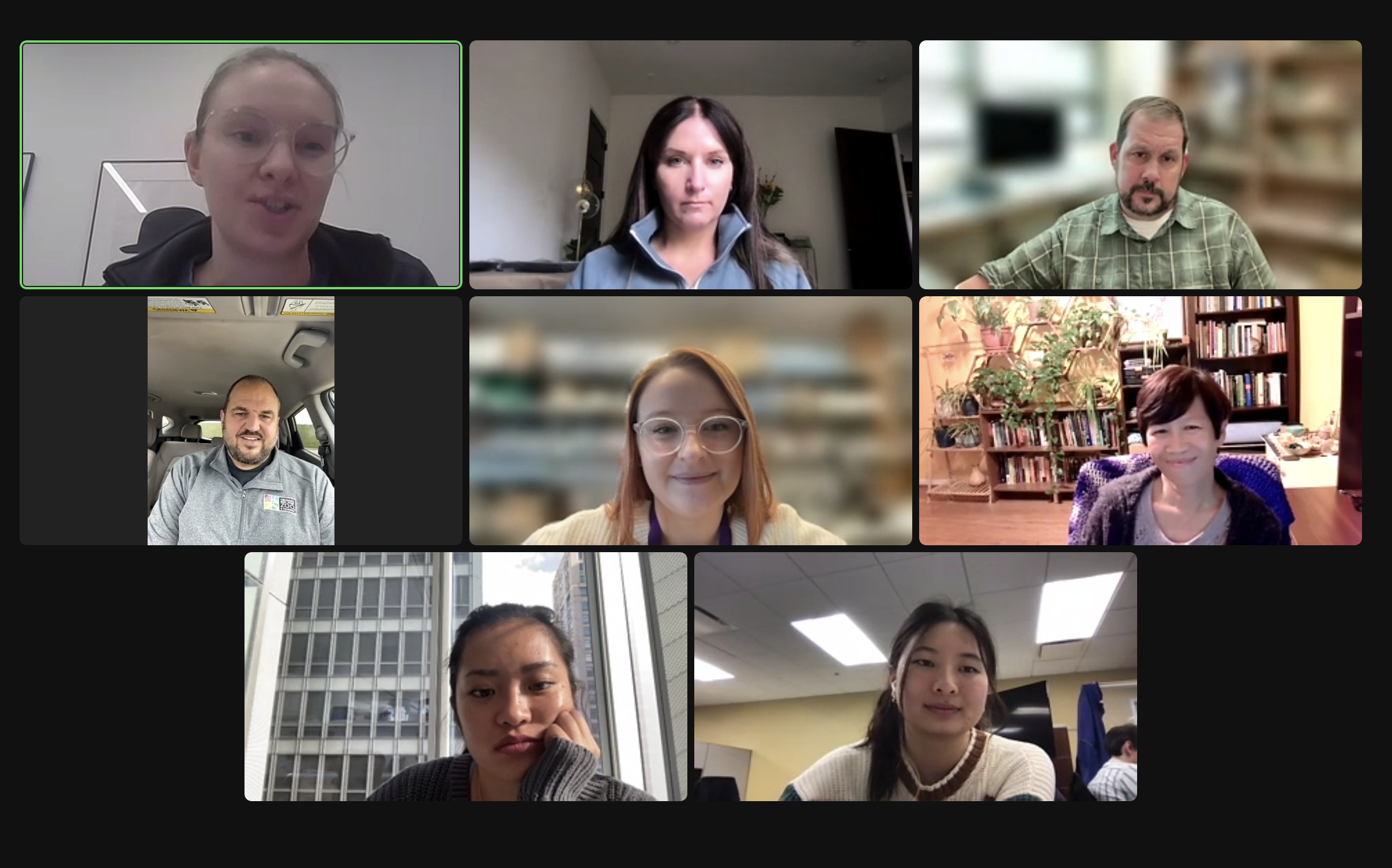Career Catalyst: Reproductive Scientists in Conservation Biology
The Center for Reproductive Science (CRS) hosted its penultimate Career Catalyst for the year 2023 on November 10th bringing together a panel of experts and leaders in the field of species conservation to talk about their careers, passions, and most importantly share their stories and advice with our trainees and scientists.

Our first speaker, Dr. Jason Herrick, PhD, has been working with different animal models well before his efforts in species conservation began. He has worked on the endocrinology of red howler monkeys, on oocyte maturation and metabolism in domestic pigs and goats and early embryo development in domestic cats at the Center for Conservation and Research of Endangered Wildlife (CREW) in Cincinnati, during which, he also initiated research programs to studies in black-footed and sand cats and develop methods of sperm cryopreservation. In 2016, he joined Omaha’s Henry Doorly Zoo and Aquarium as has since becme the Vice President of Conservation and Animal Health continues to explore ART in tigers.
Dr. Nucharin Songsasen, DVM, PhD, is a leader in Canid Reproductive biology. Her research explores the development of innovative technologies to rescue valuable genetics from wild canids and felids, translating into the improvement of human reproductive health. As the Center Head of the Center for Species Survival at the Smithsonian Zoo she studies reproductive biology of domestic and wild carnivores and has help build the Global Canid Conservation Program expanding field conservation investigations into including Brazil and Thailand and developed partnerships with national and international governmental and non-governmental organizations to address sustainability threats and led the collaboration with USGS’s Patuxent Wildlife Research Center in studying the reproductive biology and endocrinology of the whooping crane.
Dr. Christopher Tubbs, PhD, is the Associate Director of Reproductive Sciences at the San Diego Zoo Wildlife Alliance. His research merges the fields of reproductive biology and toxicology – exploring how environmental chemicals affect the reproduction of endangered species and developing in vitro methods measuring interactions between environmental chemicals and hormone receptors regulating endocrine function. True to a species conservation biologist, Dr. Tubbs has worked with several animal species – including captive-born southern white rhinos and coastal-dwelling California Condors.
Aside from the stimulating discussion in the career catalyst, it was notable how “reproductive science” does not need to be limited to a box or defined by boundaries. The field expands across several disciplines, species, careers, and beyond. Anna Heinrich, a DGP student in the Duncan Lab keen on exploring species conservation as a potential career shares her thoughts on the career catalyst: “As a trainee who is passionate about species conservation efforts, I was thrilled to learn that CRS had scheduled a panel of reproductive scientists in Conservation Biology for their career catalyst series! Such career panels help solidify diverse personal and professional goals, as well as expose CRS trainees to career trajectories that they may not have considered previously. Having the opportunity to meet and talk with Drs. Jason Herrick, Nucharin Songsasen, and Christopher Tubbs gave me the chance to gain insights into what a career as a reproductive scientist in conservation looks like, as well as the various paths that our panelists took to get to their current positions. Hearing how similar their research interests and motivations were to my own, the panel further fueled my desire to contribute to the field of conservation biology as a reproductive scientist!”
As trainees and scientists at the early stages of their careers, it was extremely inspiring to see field experts share their experiences, career trajectories, and especially vulnerabilities with honesty and humor. How certain opportunities can shape your career into a path you never saw yourself taking; or on the opposite end, how deliberate and informed choices can help you shape your career the way you always envisioned. The truth to this is that there is no “right” way to plan your life in science – there is space for growth, opportunities, and exploration as long as you have the passion and commitment, a sentiment embodied by all our speakers.